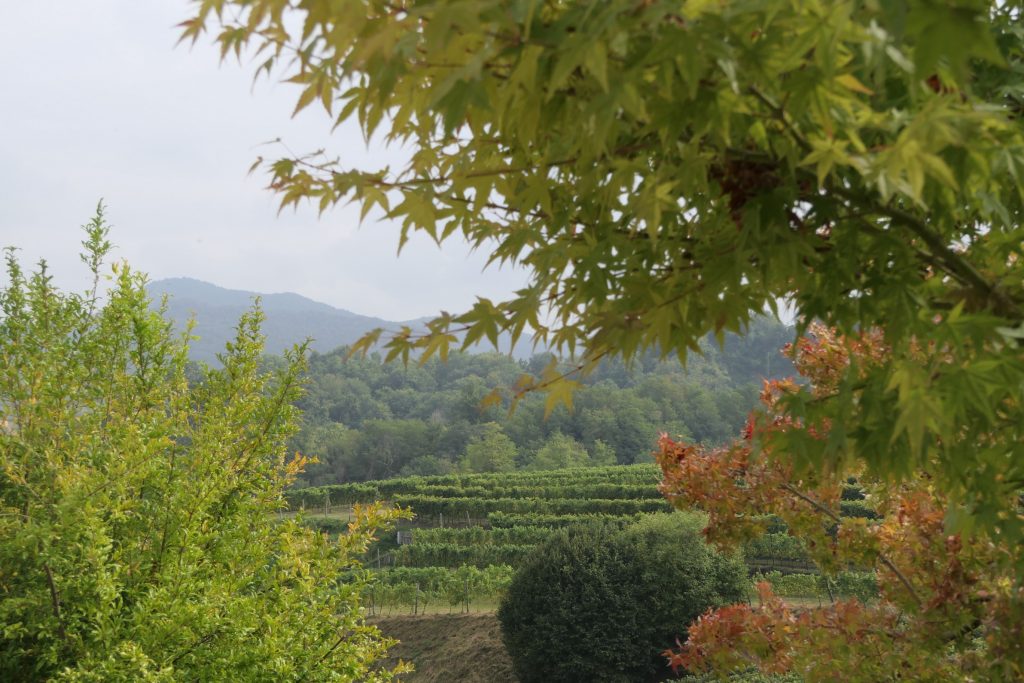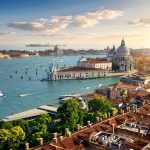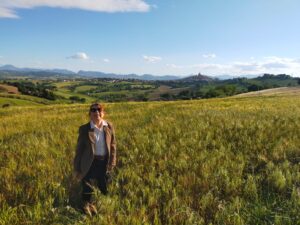With the right information and organisation
Veneto Slow Tour
Agri-food travel, between territory, history and tourism
Filming TV show “Slow Tour Padano” looking for good examples of farms committed for sustainability, I often found myself in Veneto region. No coincidence, it is a great agricultural region with an endless list of PDO and PGI products. This biodiversity is the result of climates and landscapes geographical variety: from Cortina’s mountains to the Venice lagoon, from the Euganean Hills to Verona’s plain and the Po Delta. Agriculture is a huge theme, embracing many others: history to language, gastronomy to environment. Therefore, my journey was not just agricultural.

First I challenged my friend Giacomo to a cook-off. He is a gastronome from Isola della Scala – the city of Vialone Nano rice, where every year takes place the largest Rice Fair ever. Giacomo cooked some Risotto all’Isolana recipe, I tried some Mantuan style pilaf rice. The difference? That’s huge! The challenge (followed by some tasting) took place at the Riseria La Pila, a cooperative that brings 12 different companies together, producing Vialone rice, but also Carnaroli and Arborio ones, on 600 hectares of paddies. The Riseria la Pila created something unbelievable, the organic rice field, and makes important things on circular economy side: their waste get turned into feed, cosmetics, oil and green building materials.
Next Verona I reached Padua, where I found my friend Hiro, a Japanese chef who is shopping at the market in Piazza delle Erbe and Piazza della Frutta. He looks for cooking ingredients, while I am more interested in the monumental evidence of countryside and city connection. For example, the “Canton of Busìe” (i.e. lies), where old merchants tried to cheat customers so often that the units of measurement had to be carved into the stone, to avoid scams. Or the Peronio, a column adorned with bas-reliefs depicting pumpkins, palms, pears and apples, that probably supported a large tent covering the old market. In Padua there is a special fruit-and-vegetable-library: the Botanical Garden! That is the oldest in the world, a UNESCO World Heritage Site, conceived in 1545 by the Venetians who were travelers and understood soon the importance of studying and cultivating biodiversity. Even today it is a one-of-a-kind food plants collection, an history of nutrition open book with precious hints for the future.
Travelling among the Venetian excellencies, you have to visit some wine making! Near Treviso, on the Asolo hills, I went to Tenuta Amadio. Simone Rech is young, he has taken over his grandfather’s vineyards, but changing the company to an eco-compatibility model: precision agriculture, no chemical weeding, data on soil and climate to dose irrigation, natural fertilizers, handwork and a cellar dug into the rock for naturally air conditioned wine aging. Guess what kind of wine it produces? Especially Prosecco DOCG, of course!
On the Euganean Hills I visited another company producing fine wines, the Filò delle Vigne. The owner, Carlo Giordani, has a problem with wild boars that eat grapes and damage the soil. Do not worry: in Venice, the Ca’ Foscari University created a master on wildlife! Professor Marco Olivi and his students face the eternal conflict between Agriculture and Nature with an interdisciplinary approach (biology, economy and legal). Riccardo Masin, Euganean Hills Park’s President, confirms that there is no contradiction between environmental conservation and agricultural crops in here.

I was born in a plain area, but I like the highlands where you are on the mountains without many differences in height! When I saw the Asiago area I got crazy: it is a paradise! A sweet and peaceful landscape, varied, with friendly nature. And a lot of history, starting with the Cimbri people, who came down from the North and structured a community still living Today, the Seven Municipalities, traditionally independents: Asiago, Lusiana-Conco, Enego, Roana, Rozo, Gallio and Foza. The Cimbri, among other things, invented the PDO and PGI: they exported their cheeses, but branded, to confirm their origin.
History has been unkind with Asiago highland: the First World War first cannon shot was fired here, a violent war that destroyed everything, men, houses and forests. The very same forests in 2018 got destroyed again by the Vaia Storm, which did 1.7 billion in damage in Veneto region! A hundred years ago, the locals began to cultivate the war-torn forest with small fruits, blueberries and mushrooms to compensate the loss of income from the timber. Giustino Mezzalira (from Veneto-agriculture) and Andrea Rigoni (entrepreneur) told me that we can do the same nowadays: cultivating the undergrowth producing honey with its flowers, waiting for it to be reborn. The berries seem to yield enough to provide the territories with resources, in the meantime we must replant the forest, but correcting past mistakes that weakened biodiversity. The past opens up prospects for the future, once again wisdom comes from the earth!
Patrizio Roversi
This itinerary has been conceived in collaboration with the Veneto region



























